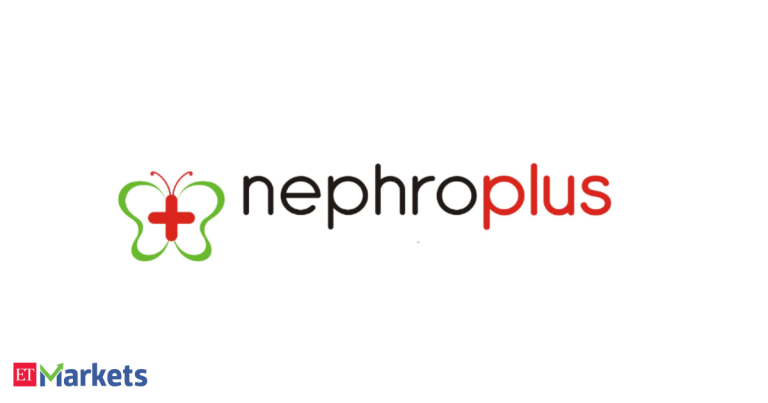MBW’s World Leaders is a regular series in which we spotlight some of the most influential industry figures overseeing key international markets. In this feature, we speak to Oscar Höglund, CEO of Epidemic Sound. World Leaders is supported by SoundExchange.
Epidemic Sound reaches audiences at a scale that many traditional music companies could only dream of.
According to its just-released Annual Report, the Stockholm-headquartered music production company achieved a 29% YoY jump in revenues to SEK 1.921 billion ($181.62 million) in 2024, while its adjusted EBITDA soared 150% to SEK 147 million ($13.9 million).
But one of the most eye-catching figures is Epidemic’s estimated online reach. Videos featuring Epidemic’s music now generate 3 billion views daily across YouTube and TikTok alone – up 500 million from the previous year.
“We’re at a scale now where we get roughly 3 billion daily views on content where our music is soundtracking – that’s the equivalent of roughly 20 Super Bowls per day,” Epidemic CEO, Oscar Höglund, tells MBW.
“We get 3 billion pieces of signal every single day telling us what the internet sounds like.”
As Höglund tells us in our wide-ranging and exclusive interview below, his company’s business model – which has courted controversy in the past over (a) its association nearly a decade ago with the notion of ‘fake artists’ on streaming services and (b) its buyout agreements – has evolved into a four-pillar remuneration system for artists.
That system includes: fixed fee payments to acts ranging from $1,775 to $8,000 per track; a share in Epidemic’s annual “Soundtrack Bonus” pool, worth $2.9 million in 2024; a 50/50 royalty split from streaming payouts; and equity opportunities for long-term contributors.
“The average artist today makes between $60,000-$80,000 per year with Epidemic, with outliers making north of $200,000 per year,” Höglund reveals.
Following its acquisition of Norway-headquartered sound effects company Soundly, Epidemic’s catalog now encompasses 250,000 pieces of content (including over 50,000 tracks, plus 200,000 sound effects).
But, as with all so-called ‘production music’ companies, Epidemic needs to think carefully about how AI will impact, and improve, its business model.
“We think AI is fantastic, but as a tool to serve human creativity, never to replace it,” explains Höglund.
Beyond the company’s impressive financial and usage metrics, Epidemic has recently secured high-profile partnerships with musicians including Johnny Marr, Richie Hawtin, and Jordin Sparks.
Here, Höglund discusses Epidemic Sound’s 2024 financial results, the company’s AI strategy, IPO rumors, and his ambitions for the future…
What would you say are the primary drivers behind Epidemic Sound’s performance, with 29% net sales growth and 150% adjusted EBITDA growth last year?
For the longest time, the most coveted job for kids growing up in the US was to be an astronaut. That’s held true for decades, and then a few years ago it shifted. The number one coveted line of work now is to be a creator.
“For the longest time, the most coveted job for kids growing up in the US was to be an astronaut. Now it’s to be a creator.”
Epidemic Sound lives in the attention economy, in the middle of the creator economy.
It’s super clear that content creation is here to stay, and that the demand for our product is super strong and keeps on compounding.
Online video is a huge thing in short form, medium form, long form, live form. The business of syncing music to content is more relevant than it’s ever been.
Underpinning our success is our dedication to audio. We’ve stayed focused on our core and being the best soundtracking platform in the world.
IN THE annual REPORT, YOU SHARE SOME EXTRAORDINARY METRICS BEYOND FINANCIAL results. WHAT TRENDS IN MUSIC CONSUMPTION HAVE YOU WITNESSED OVER THE PAST YEAR THAT HAVE SURPRISED YOU MOST AND INFLUENCED YOUR STRATEGY?
We’re at the scale now where we get roughly 3 billion daily views on content that our music soundtracks. That’s the equivalent of roughly 20 Super Bowls per day.
The vast majority of that is YouTube, and the second part is TikTok. So it’s both very short form and also long form.
We power roughly 75% of the world’s 200 largest YouTubers who come to the Epidemic Sound platform to get the music they want.
This is all a consequence of us diligently working with the most prolific storytellers of our time.
In general, we’re seeing that there’s more music being used across the board, more distribution happening, and it’s traversing different platforms – going from video into streaming and then back again.
Let’s talk about AI. THE NOTION OF ‘FAKE ARTISTS’ HAS TAKEN ON A COMPLETELY DIFFERENT MEANING WITH THE PROLIFERATION OF AI GENERATORS. HOW DO YOU SEE AI-GENERATED MUSIC AFFECTING THE MUSIC BUSINESS TODAY AND EPIDEMIC SOUND’S BUSINESS SPECIFICALLY?
We think AI is fantastic, but we think that AI is a tool to help serve human creativity, never to replace it.
In everything we do, we ensure that AI contributes to human expression and the creative experience.
We think it’s incredibly important that [companies like Epidemic] are the proprietary owners of the underlying dataset that you train on. Having access to different [AI] models is less relevant as they’re becoming more of a commodity.
The third important component is reach and distribution; we need reinforcement learning loops, such that, when you do put out AI powered products and tools, you need feedback as quickly as possible.
This is where our huge footprint comes in. With 3 billion pieces of signal every day, we can immediately determine what components are resonating with either artists or with video creators and across different platforms. We can aggregate all that signal and then we can pipe that signal back to the underlying data set.
“We think it’s incredibly important that you are the proprietary owner of the underlying dataset that you train on.”
Then we can iterate and iterate and create something new out of that. So that’s manifested itself into three different products:
- First, we help content creators solve the ‘cold start’ problem by using AI to identify what music is relevant for what kinds of video content. For example, if I were to upload footage of Las Vegas, we would run our AI on that piece of footage. We’ll then be able to see all the other pieces of content that we’ve soundtracked that have similar backdrops, similar footage, what music has historically been used, and how it performed.
- Example number two: Let’s say that you found a specific track that we were able to recommend. We now have the opportunity to do different versions of tracks in terms of [adapting] the length. Historically, you’d find a track and it’s maybe three minutes long, but the video you’re looking to edit might be 15 to 20 seconds-long. We can 1745514513 adapt and change [the length of the track using AI] and [create] different versions at 18 seconds, 15 seconds or 12 seconds with automatic edits. We’ve gone from a world where the video producer had to be a sound engineer and try cut these tracks, which you and I both know is time-consuming and quite difficult. So AI has made life much easier for said person.
- The third point is something that we’ve launched quite recently, but to great avail, which underpins our entire approach to AI on the generative side. We’ve just released something called Human Voiceovers. We’ve gone to professional voice actors, and we’ve commissioned them, and so we’ve paid them upfront to train on their voice. We then set aside a distinct royalty pool for them, similar to the Soundtrack bonus that we have now, which encompasses millions of dollars. Such that when storytellers use these models and use these voices, not only have the actors been paid up front to train on their voices, it’s going to generate royalties which we pay out to these actors going forward. And this is a royalty that didn’t exist before. Suddenly we’re pumping music into the creator ecosystem, as opposed to using AI to just extract value.
This is a very important point, because I think there lacks a vision for hope as it relates to AI. Content creators see AI as something that’s coming after them. We’re very clearly positioning this as the opposite.
YOU MENTIONED EPIDEMIC SOUND ARTISTS ARE UNDER NON-EXCLUSIVE AGREEMENTS. HOW DO YOU SEE EPIDEMIC SOUND POSITIONED IN THE GLOBAL MUSIC BUSINESS TODAY IN TERMS OF OPPORTUNITIES FOR ARTISTS?
We strongly believe in earning the trust of our artists. Our agreements are non-exclusive; we want to provide fantastic opportunities, and we believe that as long as we keep focusing on that, and providing great opportunities, people will reward our efforts by sticking around. At the same time, we are adamant about not being exclusive. We want more opportunity for artists, not less.
“We run a restricted marketplace where less than 0.3% of all the people who reach out actually get accepted.”
At the same time, we are not an open marketplace [like] many other DSPs. We run a restricted marketplace. We get tens of thousands of artists who annually reach out and apply to work for Epidemic because of the distribution, the monetization, because of the data we provide, and because of the camaraderie that we’ve been able to set up, and the brand that we’ve built for ourselves.
Less than 0.3% of all the people who reach out actually get accepted. So 16 years in, it’s very difficult to become an artist that gets to deliver music to Epidemic. More often than not, you need to be an Emmy award-winner, or at least nominee, in order to have the opportunity to participate and contribute.
So it’s in that way that we are different from many other platforms out there. We’re not open to everyone. We try to be very bespoke, high profile, and [set] a high-quality bar.
REUTERS recently REPORTED THAT EPIDEMIC SOUND WAS EXPLORING STRATEGIC OPTIONS, INCLUDING A POTENTIAL IPO. CAN YOU CONFIRM OR DENY THAT?
For the 16 years I’ve been running Epidemic, there’s been a never-ending, constant flurry of rumors about soon-to-happen IPOs or other financial events. I can report that no, we have no such intention right now.
2024 was a year characterized by a lot of learnings. The Creator economy is still in its infancy. I’m only focused on building a world-class business while experimenting, understanding new opportunities, understanding our new tools, and building out the offering for artists and content creators.
I have no interest in exploring any other setups or options. We are super well-positioned right now. We have an exceptional cap table of owners who are very excited about where we are and what we’re building. We are thoroughly focused on that.
WHAT DO YOU SEE AS THE MOST UNDERVALUED OR OVERLOOKED OPPORTUNITY FOR EPIDEMIC SOUND’S BUSINESS THAT THE WIDER TRADITIONAL MUSIC BUSINESS MIGHT NOT FULLY APPRECIATE?
Distribution is incredibly important – reaching a huge amount of people. If artists have a spectacular voice, they are looking to reach as many people as possible and sustain themselves through their skills. Trying to serve that better than anyone is a huge opportunity. So that comes down to The “Epidemic Effect”.
In 2024 we did a lot of experimentation around understanding how tracks travel across social media and social video platforms onto streaming platforms. What are the prerequisites, and what are the signals of success? Understanding how that plays out is super interesting. The distribution component, the marketing component, the breaking of new artists – these have been challenges for the longest time.
We’re also educating an entire generation in a new way to pay for music usage. Our subscription is now used across the world around by storytellers, and we’ve educated them that you pay for music up front. Yes, we have a different model and we’ve made it super simple, but we’re making sure that everyone is paying for music. Those are two important parts of value that we bring to the table.
WHAT ARE YOUR AMBITIONS FOR 2025 INTO 2026 FOR YOUR FINANCIAL METRICS, CONSUMPTION METRICS, AND EPIDEMIC SOUND’S POSITIONING IN THE GLOBAL MUSIC BUSINESS?
For positioning, it’s not lost on me that Epidemic has held a very low profile for many years. Now we’re being increasingly more open, more vocal and very transparent about the quality of our roster and the level of artistry. Showcasing the beautiful artistry and the incredible talent we work with is front and center because it’s in our artists’ interests, in our customers’ interest, and in the industry’s interest to see what we’re achieving.
Number two is the underlying metrics for how the business is performing. We’re very focused on continuing to be the soundtracking platform of choice for content creators. There’s the musical component to that and there’s a technical component we haven’t spoken about much – launching more plugins into editing suites, writing more AI tools to hack away at the friction that is sync, that is soundtracking. Democratizing access, and making it easier for people to express themselves creatively using audio.
Financially, I don’t want to commit to anything going forward. We’re still at the early phases of the Creator economy, so we’re investing a lot in operational efficiency, understanding our processes, making sure that it’s the right person at the right time, doing the right thing in the right part of the world. And so part of it is growing up and training that muscle such that we can keep on compounding and showing that this is, over time, a very lucrative business.
But in parallel, we’re committing to not giving any forward-looking numbers, because we want to continue to run a ton of experiments. There’s so much going on in our space right now and arguably in the world in general, that we want to make it super clear that we are still in building mode.

SoundExchange was independently formed in 2003 to build a fairer, simpler, and more efficient music industry through technology, data, and advocacy. The only organization designated by the U.S. government to administer the Section 114 sound recording license, SoundExchange collects and distributes digital performance royalties on behalf of 700,000 music creators and growing.Music Business Worldwide






